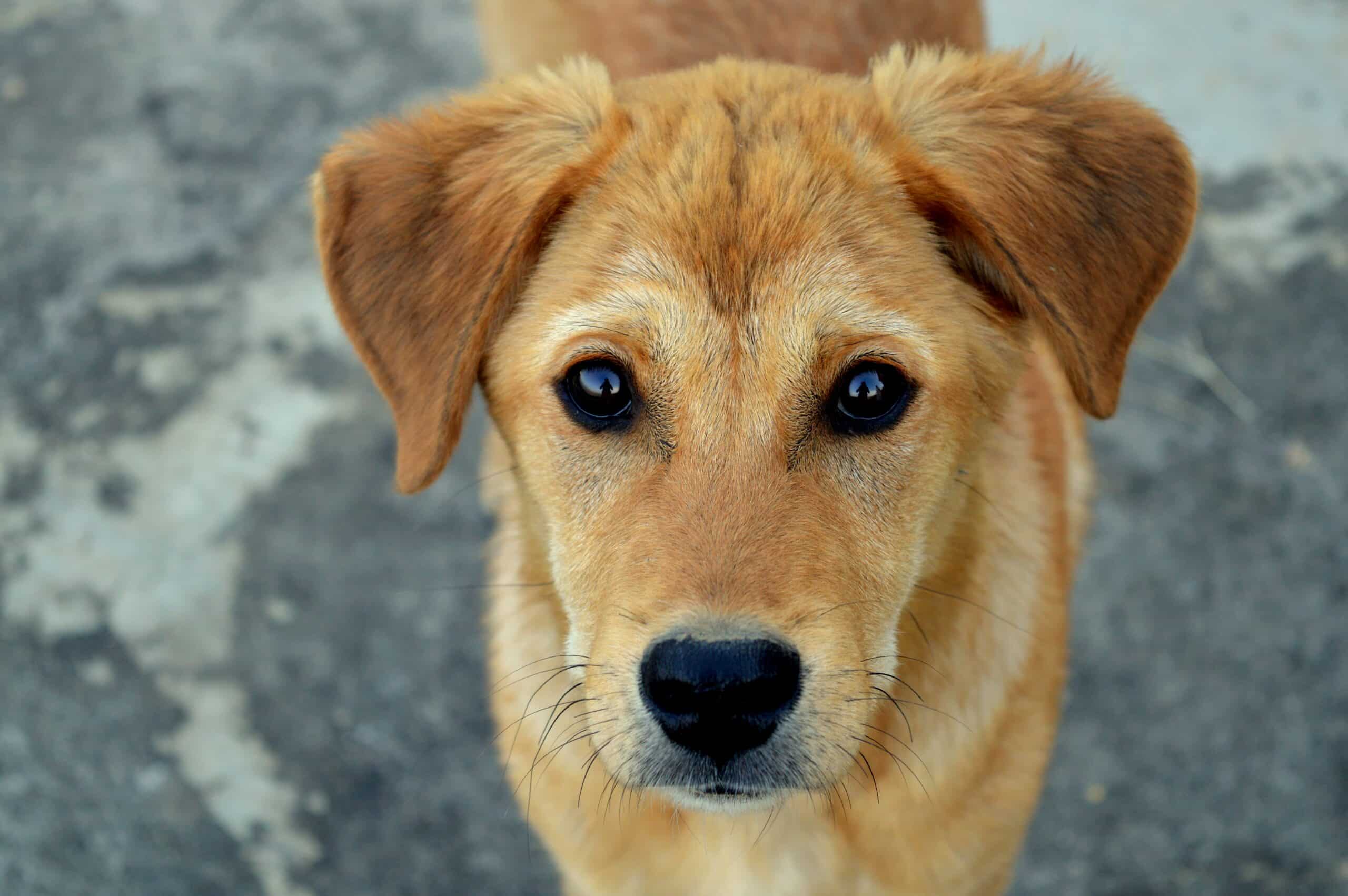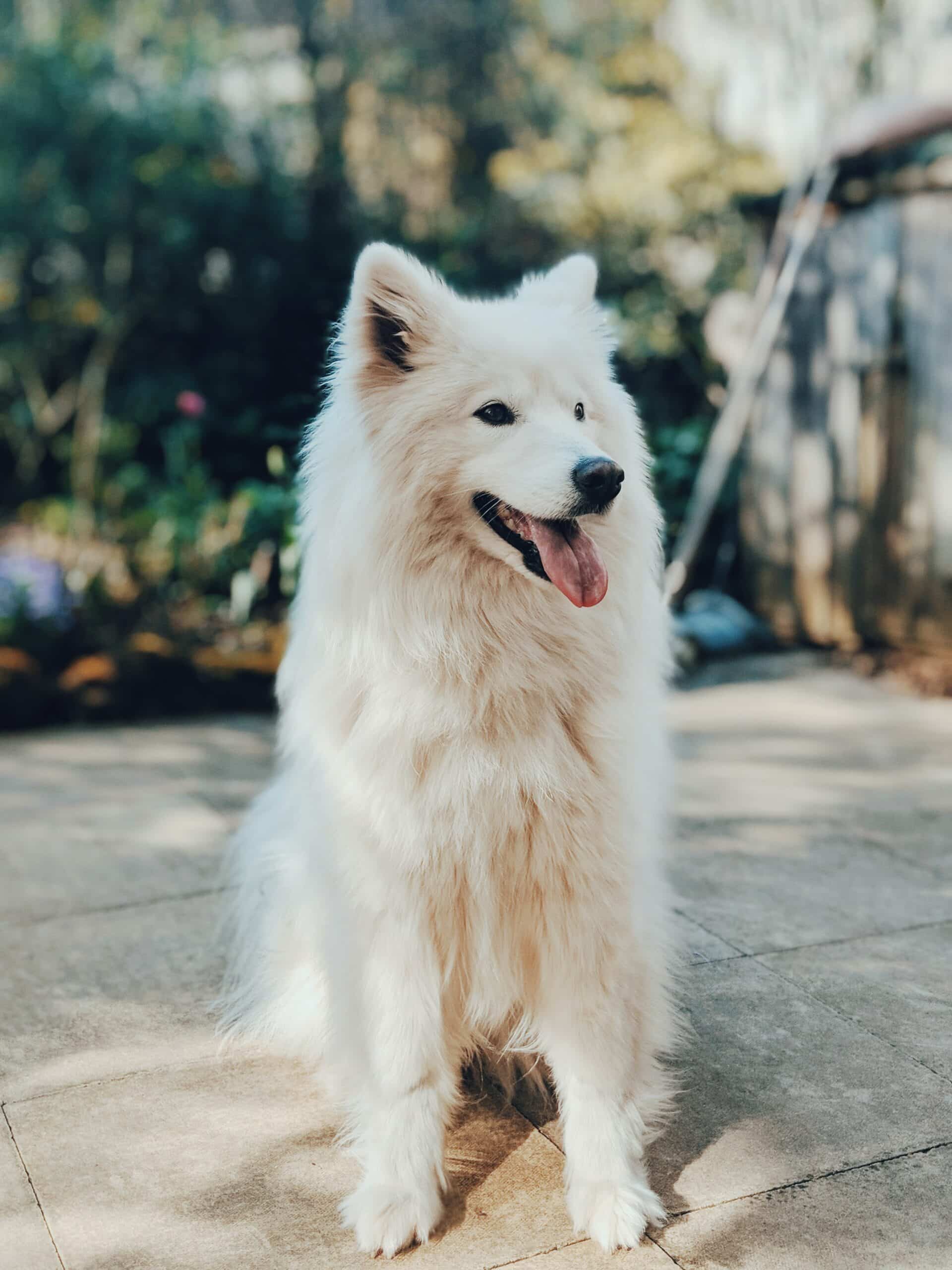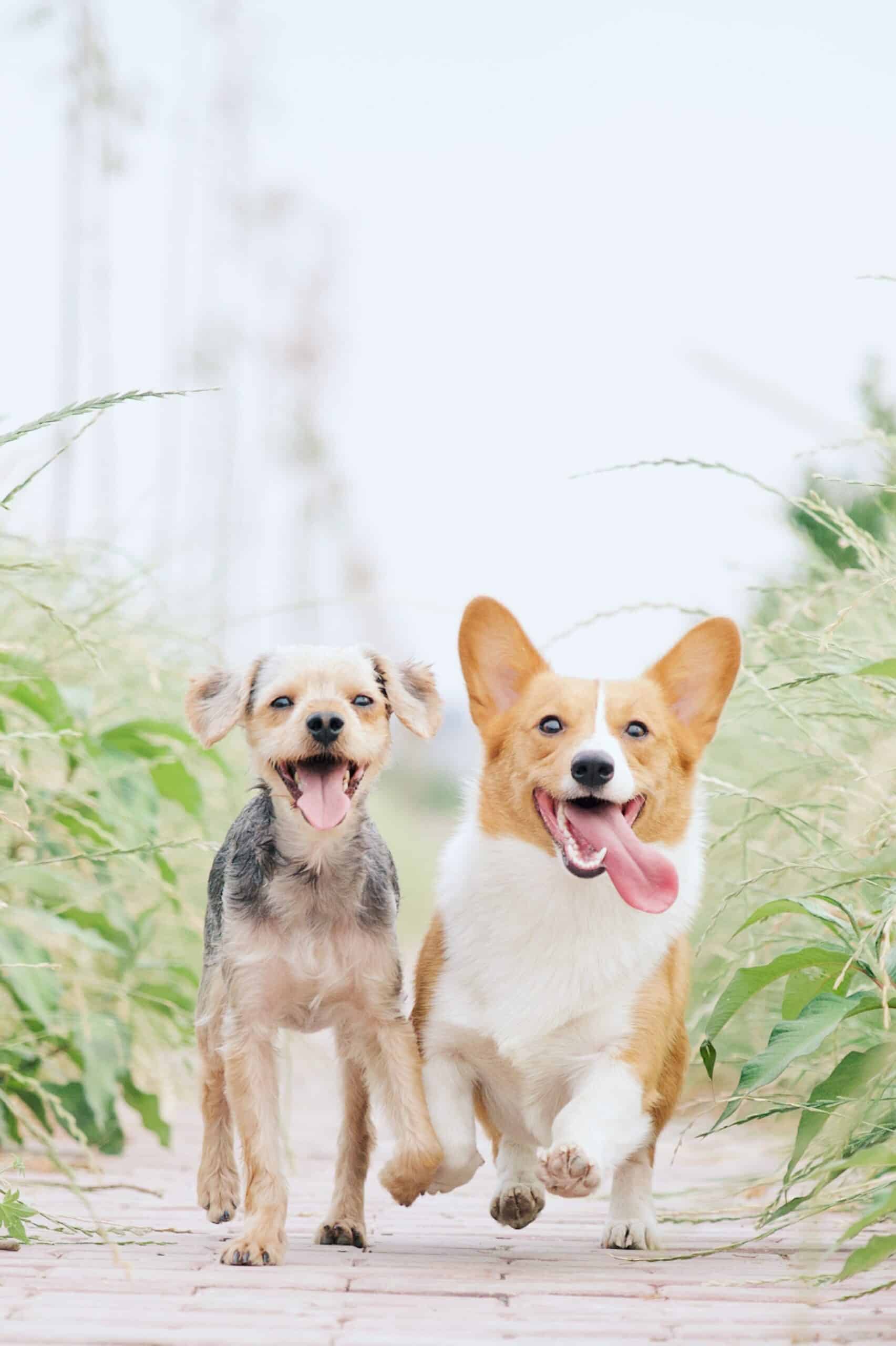
Hundar
Man's best friend
Man's best friend
People love their dogs for various reasons: they are our most truthful friends, and companions, protect us, love us unconditionally, and want to be with us all the time. We love dogs and they love us back, but what are the historical and biological facts that lead to this unbreakable relationship people have with their dogs?!
After all, there are so many reasons for people to love dogs due to our long history and development together.
People love their dogs for various reasons: they are our most truthful friends, and companions, protect us, love us unconditionally, and want to be with us all the time. We love dogs and they love us back, but what are the historical and biological facts that lead to this unbreakable relationship people have with their dogs?!
After all, there are so many reasons for people to love dogs due to our long history and development together.

The dog's evolution from wolf
The dog's evolution from wolf
The wolf evolved over a geological time scale of at least 300 thousand years.
Canis lupus, the grey wolf, is a highly adaptable species that can live in a variety of environments and has a wide distribution across the Holarctic. Studies on modern grey wolves have revealed distinct subpopulations that coexist.
This variation in subpopulations is closely related to habitat differences – precipitation, temperature, vegetation, and prey specialization – all of which affect craniodental plasticity.
Grey wolves have been present for at least 300,000 years, according to archaeological and paleontological records.
The wolf evolved over a geological time scale of at least 300 thousand years.
Canis lupus, the grey wolf, is a highly adaptable species that can live in a variety of environments and has a wide distribution across the Holarctic. Studies on modern grey wolves have revealed distinct subpopulations that coexist.
This variation in subpopulations is closely related to habitat differences – precipitation, temperature, vegetation, and prey specialization – all of which affect craniodental plasticity.
Grey wolves have been present for at least 300,000 years, according to archaeological and paleontological records.
Dogs evolved from an extinct wolf species
Dogs evolved from an extinct wolf species
This continuous presence contrasts with genomic analyses, which suggest that all modern wolves and dogs descend from a common ancestral wolf population that existed as recently as 20,000 years ago.
These analyses indicate a population bottleneck, followed by rapid radiation from an ancestral population at a time during, or just after, the Last Glacial Maximum.
This implies that the original wolf populations were out-competed by a new type of wolf which replaced them. However, the geographic origin of this radiation is not known.
As a result, the dog developed from an eradicated wolf species. Grey wolves were probably domesticated 15,000-30,000 years ago once they began scavenging around human settlements.
This continuous presence contrasts with genomic analyses, which suggest that all modern wolves and dogs descend from a common ancestral wolf population that existed as recently as 20,000 years ago.
These analyses indicate a population bottleneck, followed by rapid radiation from an ancestral population at a time during, or just after, the Last Glacial Maximum.
This implies that the original wolf populations were out-competed by a new type of wolf which replaced them. However, the geographic origin of this radiation is not known.
As a result, the dog developed from an eradicated wolf species. Grey wolves were probably domesticated 15,000-30,000 years ago once they began scavenging around human settlements.
What is a population bottleneck
A population bottleneck, also known as a genetic bottleneck, is a sharp decrease in population size affected by natural occurrences such as mass starvation, seismic activity, river flooding, wildfire, illness, and periods of drought, or by anthropogenic activities such as specifically noted, mass violence or deliberate slaughter, and human population planning.
Those very events can reduce variation in a population's gene pool, resulting in a reduced population with less genetic diversity to pass genes on to future generations of offspring via sexual reproduction.

What is a population bottleneck
A population bottleneck, also known as a genetic bottleneck, is a sharp decrease in population size affected by natural occurrences such as mass starvation, seismic activity, river flooding, wildfire, illness, and periods of drought, or by anthropogenic activities such as specifically noted, mass violence or deliberate slaughter, and human population planning.
Those very events can reduce variation in a population's gene pool, resulting in a reduced population with less genetic diversity to pass genes on to future generations of offspring via sexual reproduction.
The consequences of the bottleneck event
Genetic diversity remains low, increasing only when gene flow from another population occurs or very slowly as random mutations occur over time.
As a result, the population's robustness and ability to adapt to and survive selective environmental changes, such as climate change or a shift in available resources, are reduced.
Alternatively, if the survivors of the bottleneck have the highest genetic fitness, the frequency of the fitter genes within the gene pool increases while the pool itself decreases. Inbreeding and genetic homogeneity may increase, potentially leading to inbreeding depression.
Smaller population sizes can also lead to the accumulation of harmful mutations.
Population bottlenecks are important in conservation biology and in agricultural contexts (biological and pest control).

The consequences of the bottleneck event
Genetic diversity remains low, increasing only when gene flow from another population occurs or very slowly as random mutations occur over time.
As a result, the population's robustness and ability to adapt to and survive selective environmental changes, such as climate change or a shift in available resources, are reduced.
Alternatively, if the survivors of the bottleneck have the highest genetic fitness, the frequency of the fitter genes within the gene pool increases while the pool itself decreases. Inbreeding and genetic homogeneity may increase, potentially leading to inbreeding depression.
Smaller population sizes can also lead to the accumulation of harmful mutations.
Population bottlenecks are important in conservation biology and in agricultural contexts (biological and pest control).
Humans domesticated dogs
The relationship between humans and dogs is characterized by a clear dominance hierarchy, not only during the process of domestication but also during the individual life of the dog.
Humans have domesticated dogs to help us in various tasks that we were doing such as hunting, being guardians of our homes, and our companions.
More recently we added other tasks to dogs to help us also rescue people, therapy, be hair models in dog grooming, influencers on social media, and be in service of the military and police.
Humans domesticated dogs
The relationship between humans and dogs is characterized by a clear dominance hierarchy, not only during the process of domestication but also during the individual life of the dog.
Humans have domesticated dogs to help us in various tasks that we were doing such as hunting, being guardians of our homes, and our companions.
More recently we added other tasks to dogs to help us also rescue people, therapy, be hair models in dog grooming, influencers on social media, and be in service of the military and police.
Why do we love dogs
Why do we love dogs
They make us laugh ( whether it is their way of looking or some funny tricks they learned by themselves, dogs are really funny creatures, therefore we love them because they make us laugh)
They comfort us when we are sad, there is no secret anymore that dogs can smell our feelings and know when we are happy or sad, therefore whenever we feel sad for some reason, our dog always comes to sit with us and make us feel better
Dogs listen to our problems (although they might not understand what we're talking about, they are really good listeners and at the same time, they will not tell us secrets that we share with them with anyone)
they make us laugh ( whether it is their way of looking or some funny tricks they learned by themselves, dogs are really funny creatures, therefore we love them because they make us laugh)
they comfort us when we are sad, there is no secret anymore that dogs can smell our feelings and know when we are happy or sad, therefore whenever we feel sad for some reason, our dog always comes to sit with us and make us feel better
dogs listen to our problems (although they might not understand what we're talking about, they are really good listeners and at the same time, they will not tell us secrets that we share with them with anyone)
they make us laugh ( whether it is their way of looking or some funny tricks they learned by themselves, dogs are really funny creatures, therefore we love them because they make us laugh)
they comfort us when we are sad, there is no secret anymore that dogs can smell our feelings and know when we are happy or sad, therefore whenever we feel sad for some reason, our dog always comes to sit with us and make us feel better
dogs listen to our problems (although they might not understand what we're talking about, they are really good listeners and at the same time, they will not tell us secrets that we share with them with anyone)
They make us laugh ( whether it is their way of looking or some funny tricks they learned by themselves, dogs are really funny creatures, therefore we love them because they make us laugh)
They comfort us when we are sad, there is no secret anymore that dogs can smell our feelings and know when we are happy or sad, therefore whenever we feel sad for some reason, our dog always comes to sit with us and make us feel better
Dogs listen to our problems (although they might not understand what we're talking about, they are really good listeners and at the same time, they will not tell us secrets that we share with them with anyone)
They teach us to be more forgiving and live the moment (even though dogs don't understand most things that humans understand about their lives, they always live in the present, they are happiest just for small things like getting a treat and going out for a walk, these are good things that people can learn from dogs to be more relaxed and happy)
Dogs keep us happy and healthy (just thinking about the fact if we wouldn't have a dog, we wouldn't go out at all and that is for sure a step backward to maintaining a healthy and active life; and also the happiness that comes with having a dog-always having a friend with you wherever you go)
Dogs love us more than they love themselves (this is a fact we realized in time about dogs, also quoted by the American writer Henry Wheeler Shaw. Dogs would risk their lives in a blink of an eye to save their owner because this is how they are created to be: loyal, filled with love and care).
They teach us to be more forgiving and live the moment(even though dogs don't understand most things that humans understand about their lives, they always live in the present, they are happiest just for small things like getting a treat and going out for a walk, these are good things that people can learn from dogs to be more relaxed and happy)
Dogs keep us happy and healthy(just thinking about the fact if we wouldn't have a dog, we wouldn't go out at all and that is for sure a step backward to maintaining a healthy and active life; and also the happiness that comes with having a dog-always having a friend with you wherever you go)
Dogs love us more than they love themselves(this is a fact we realized in time about dogs, also quoted by the American writer Henry Wheeler Shaw. Dogs would risk their lives in a blink of an eye to save their owner because this is how they are created to be: loyal, filled with love and care).
Research about how dogs can understand humans
One cautionary application of the multiple routes framework would be to assume that dogs have acquired a special sensitivity towards human gestures, speech, and behavior as a phylogenetic inflection through human selection over many thousands of years.
This sensitivity is not a new cognitive or sensory mechanism, but the result of a selection biasing the input. It has been assumed that dogs have been selected to cooperate and communicate with humans during domestication and, thus, evolved some genetic predispositions allowing them to develop skills shared with humans.
Accordingly, it has been suggested that, uniquely, domestication has equipped dogs with two abilities necessary for cooperative problem solving – namely social tolerance and social attentiveness, which enable them to adjust their behavior to that of their human partners.
Research about how dogs can understand humans
One cautionary application of the multiple routes framework would be to assume that dogs have acquired a special sensitivity towards human gestures, speech, and behavior as a phylogenetic inflection through human selection over many thousands of years.
This sensitivity is not a new cognitive or sensory mechanism, but the result of a selection biasing the input. It has been assumed that dogs have been selected to cooperate and communicate with humans during domestication and, thus, evolved some genetic predispositions allowing them to develop skills shared with humans.
Accordingly, it has been suggested that, uniquely, domestication has equipped dogs with two abilities necessary for cooperative problem solving – namely social tolerance and social attentiveness, which enable them to adjust their behavior to that of their human partners.
Why did we choose dogs over wolves?
It has been proposed that dogs were selected for their tamer temperament and lower fear and aggression, allowing a potential partner to come close even around food, which explains why dogs outperform wolves in cooperative and communicative interactions with humans.
A high level of social attentiveness facilitates cooperation with humans and learning from humans, in addition to social tolerance.
Cooperation necessitates that the partners pay enough attention to each other to adjust or synchronize their behavior, whereas social learning necessitates paying attention to the demonstrator's actions as well as the context in which they are carried out.
Attentiveness to potential partners varies not only according to tasks but also, at least in the human-dog case, critically.
Why did we choose dogs over wolves?
It has been proposed that dogs were selected for their tamer temperament and lower fear and aggression, allowing a potential partner to come close even around food, which explains why dogs outperform wolves in cooperative and communicative interactions with humans.
A high level of social attentiveness facilitates cooperation with humans and learning from humans, in addition to social tolerance.
Cooperation necessitates that the partners pay enough attention to each other to adjust or synchronize their behavior, whereas social learning necessitates paying attention to the demonstrator's actions as well as the context in which they are carried out.
Attentiveness to potential partners varies not only according to tasks but also, at least in the human-dog case, critically.

Dogs succeeded in a variety of tasks
Dogs succeed in a variety of tasks
Attentiveness to potential partners varies not only according to the tasks but also depends on the relationship between the partners, at least in the human-dog case.
Dogs have demonstrated success in a variety of tasks that are thought to require high attention from humans, including experiments on social learning, social referencing, communication, responding to unequal rewards, and cooperation.
Attentiveness to potential partners varies not only according to the tasks but also depends on the relationship between the partners, at least in the human-dog case.
Dogs have demonstrated success in a variety of tasks that are thought to require high attention from humans, including experiments on social learning, social referencing, communication, responding to unequal rewards, and cooperation.
Dogs developed social skills
Pointing studies provide additional evidence for the differences between dogs and wolves. Young dogs follow humans more closely and look at them more readily than human-raised wolves.
Researchers hypothesized that dogs have developed greater social attentiveness than wolves and, as a result, can achieve more complex forms of dog-human communication and cooperation than wolves.
According to the Canine Cooperation Hypothesis, wolve's high social attentiveness, tolerance, and likely cooperativeness provided a good foundation for dog-human cooperation to evolve during domestication.
Furthermore, some relevant characteristics of sociability and cooperativeness are shared by wolves and humans, which may have aided in the domestication of dogs.
However, dogs are not only particularly sensitive to humans because of their species' domestication history and the evolutionary baggage passed down to them from their wild ancestors, the wolves.
They are also what they are because each of them cultivates their exceptional sensitivity to humans on an individual, ontogenetic level.
Dogs developed social skills
Pointing studies provide additional evidence for the differences between dogs and wolves. Young dogs follow humans more closely and look at them more readily than human-raised wolves.
Researchers hypothesized that dogs have developed greater social attentiveness than wolves and, as a result, can achieve more complex forms of dog-human communication and cooperation than wolves.
According to the Canine Cooperation Hypothesis, wolve's high social attentiveness, tolerance, and likely cooperativeness provided a good foundation for dog-human cooperation to evolve during domestication.
Furthermore, some relevant characteristics of sociability and cooperativeness are shared by wolves and humans, which may have aided in the domestication of dogs.
However, dogs are not only particularly sensitive to humans because of their species' domestication history and the evolutionary baggage passed down to them from their wild ancestors, the wolves.
They are also what they are because each of them cultivates their exceptional sensitivity to humans on an individual, ontogenetic level.

At the same, an interesting fact about dogs: they can read our faces and emotions, so they understand us. There is one study that shows how important the human gaze is for their dog (when it comes to training and communication in general).
Dogs also follow the human gaze into distant space and use human eyes to judge their attentional state.

At the same, an interesting fact about dogs: they can read our faces and emotions, so they understand us. There is one study that shows how important the human gaze is for their dog (when it comes to training and communication in general).
Dogs also follow the human gaze into distant space and use human eyes to judge their attentional state.
The sausage temptation and the owner's voice studies
The sausage temptation and the owner's voice studies
In one study, dogs were tempted with sausages but told not to eat them by their caregiver.
The dogs obeyed to varying degrees depending on the caregiver's attention. When the caregiver was watching them, the dogs stayed lying down the most often or for the longest time, but when she read a book, watched TV, turned her back on them, or left the room, their patience wore thin.
They were taking cues from eye contact and eye orientation.
Also, as another study confirms, dogs can match our voices with our faces. During the study, when they heard their owner's voice but someone else's picture came up, they hesitated and became confused, in comparison with when they heard their owner's voice and also see their face.

In one study, dogs were tempted with sausages but told not to eat them by their caregiver.
The dogs obeyed to varying degrees depending on the caregiver's attention. When the caregiver was watching them, the dogs stayed lying down the most often or for the longest time, but when she read a book, watched TV, turned her back on them, or left the room, their patience wore thin.
They were taking cues from eye contact and eye orientation.
Also, as another study confirms, dogs can match our voices with our faces. During the study, when they heard their owner's voice but someone else's picture came up, they hesitated and became confused, in comparison with when they heard their owner's voice and also see their face.
Dogs developed a human understaning sensitivity
Dogs may have developed a special sensitivity to human gestures, speech, and behavior as a result of domestication programs aimed at producing companions that work with or for humans and thus follow human commands.
Neither human's closest living relative, the chimp nor dog's closest living relative, the wolf, can understand and use human communicative cues as flexibly as the domestic dog.
This type of phylogenetic enculturation that occurred over thousands of years is continued and amplified throughout their lifespan, as companion dogs accumulate an enormous amount of experience while living with humans.
The behavior of assistance dogs, particularly those used to guide blind people, is an excellent example of how well dogs understand humans and how eager they are to cooperate.
Dogs developed a human understaning sensitivity
Dogs may have developed a special sensitivity to human gestures, speech, and behavior as a result of domestication programs aimed at producing companions that work with or for humans and thus follow human commands.
Neither human's closest living relative, the chimp nor dog's closest living relative, the wolf, can understand and use human communicative cues as flexibly as the domestic dog.
This type of phylogenetic enculturation that occurred over thousands of years is continued and amplified throughout their lifespan, as companion dogs accumulate an enormous amount of experience while living with humans.
The behavior of assistance dogs, particularly those used to guide blind people, is an excellent example of how well dogs understand humans and how eager they are to cooperate.
Dogs understand human cues such as distal or proximate pointing, head turns, and eye glances, which helps us communicate better with one another.

Human-dog relationship is unbreakable
It has been established that humans have a long history with dogs. For thousands of years, we helped each other and evolved together. Because our bond with dogs is unbreakable, we can only expect it to grow stronger and flourish over time. We adore our dogs, and they adore us; if we ever travel to other galaxies, we will bring them with us to spread love throughout the universe.
Human-dog relationship is unbreakable
It has been established that humans have a long history with dogs. For thousands of years, we helped each other and evolved together. Because our bond with dogs is unbreakable, we can only expect it to grow stronger and flourish over time. We adore our dogs, and they adore us; if we ever travel to other galaxies, we will bring them with us to spread love throughout the universe.

Until one has loved an animal, a part of one’s soul remains unawakened.
Anatole France
Until one has loved an animal, a part of one’s soul remains unawakened.
Anatole France



